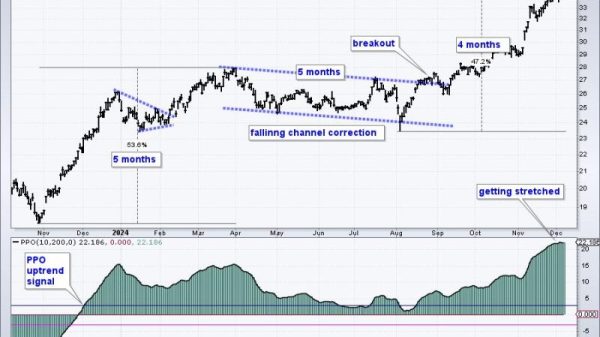Looking for the Next Entry Point in SPY? Use RSI!
When it comes to trading in the stock market, finding the right entry point is crucial for success. One of the tools that traders often use to identify potential entry points is the Relative Strength Index (RSI). RSI is a momentum oscillator that measures the speed and change of price movements, helping traders determine when a stock may be overbought or oversold.
In the case of the SPDR S&P 500 ETF (SPY), which tracks the performance of the S&P 500 index, using RSI can be particularly effective due to the high liquidity and trading volume of this ETF. By analyzing the RSI indicator for SPY, traders can identify potential entry points that align with the prevailing market trends.
When looking for the next entry point in SPY using RSI, traders should consider the following key points:
1. RSI Levels: The RSI indicator ranges from 0 to 100, with levels above 70 indicating that a stock may be overbought and levels below 30 suggesting that it may be oversold. When analyzing SPY, traders should look for RSI levels that signal potential reversal points in the price trend.
2. Divergence: Divergence occurs when the RSI indicator moves in the opposite direction of the stock price. This can be a strong signal that a trend reversal or correction is imminent. Traders can use divergence between RSI and SPY price movements to identify entry points that align with potential market reversals.
3. Trend Confirmation: It’s essential to consider the prevailing market trend when using RSI to identify entry points in SPY. Traders should look for RSI signals that confirm the overall trend direction, whether it’s bullish or bearish. Aligning RSI entry points with the market trend can increase the likelihood of successful trades.
4. Support and Resistance Levels: In addition to RSI signals, traders should also consider key support and resistance levels when identifying entry points in SPY. These levels can act as barriers that influence price movements, providing additional confirmation for potential entry points based on RSI analysis.
5. Risk Management: As with any trading strategy, risk management is crucial when using RSI to identify entry points in SPY. Traders should set stop-loss levels based on their risk tolerance and ensure that their potential losses are limited in case the trade doesn’t go as planned.
In conclusion, using the Relative Strength Index (RSI) can be a valuable tool for identifying the next entry point in SPY. By analyzing RSI levels, divergence, trend confirmation, support and resistance levels, and implementing effective risk management strategies, traders can make informed decisions that align with market trends and increase their chances of successful trades in the SPY ETF.


























